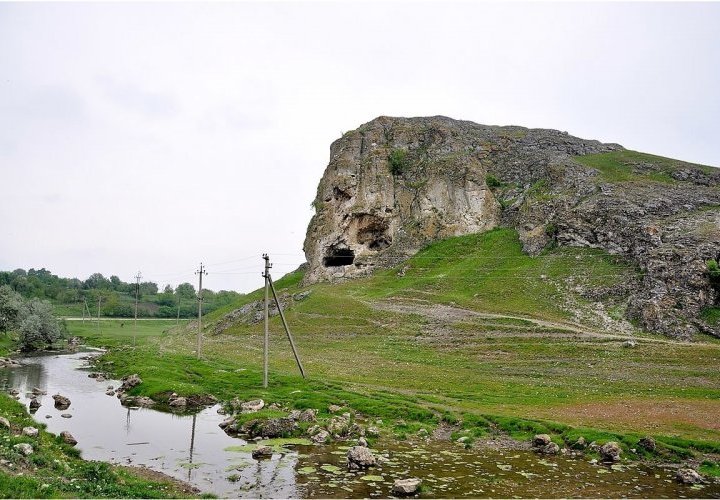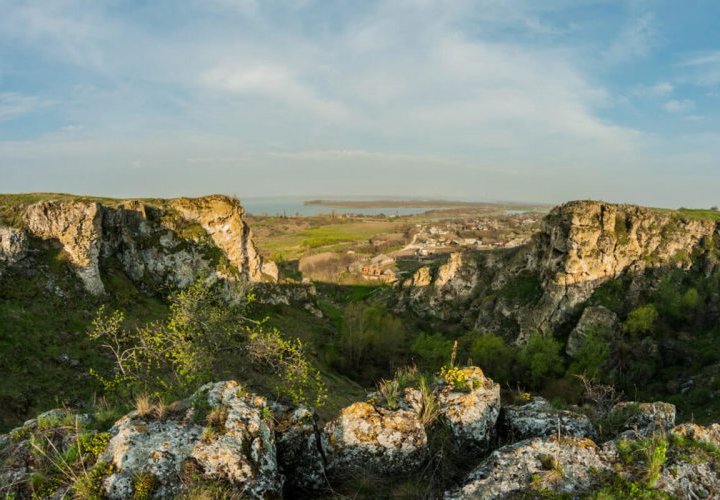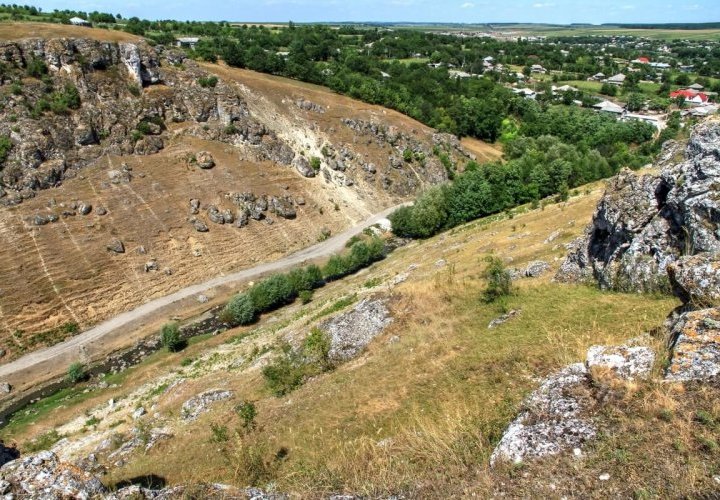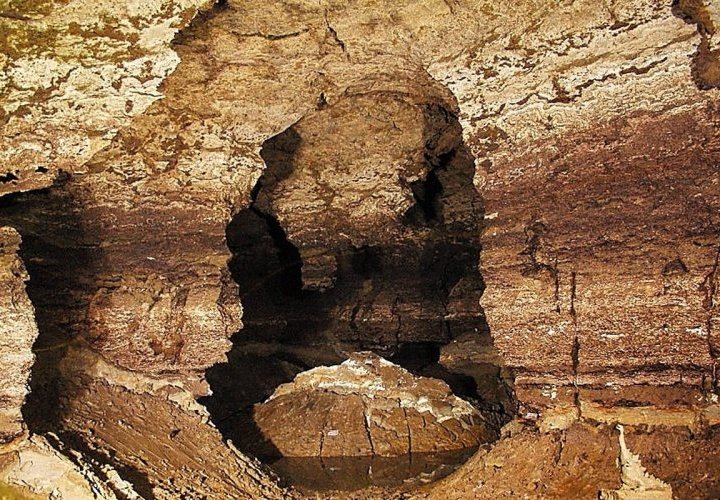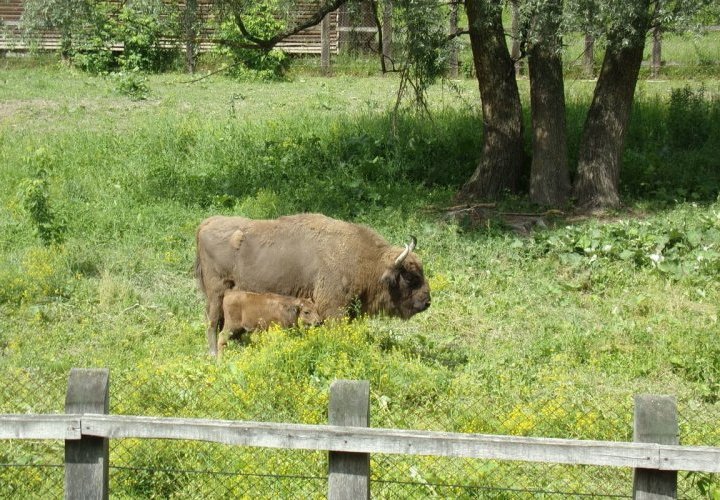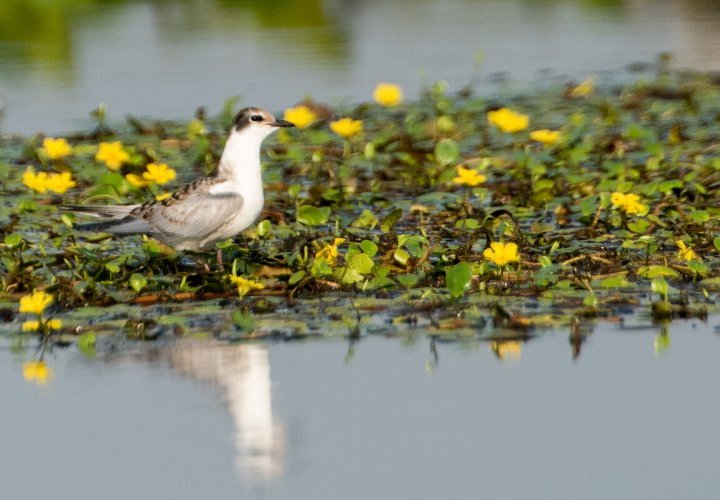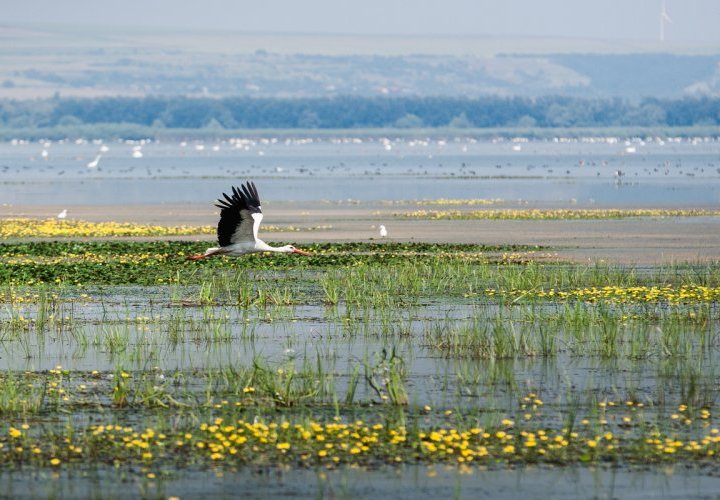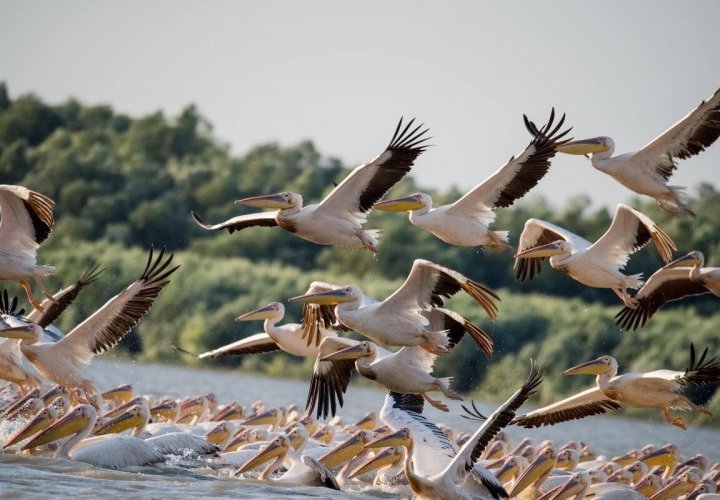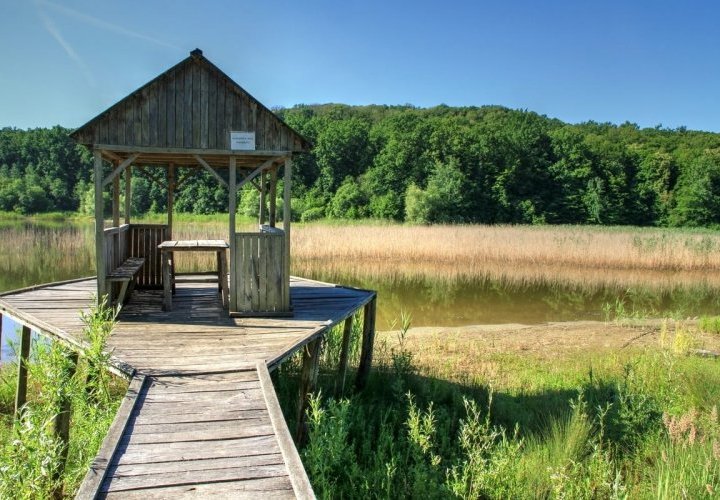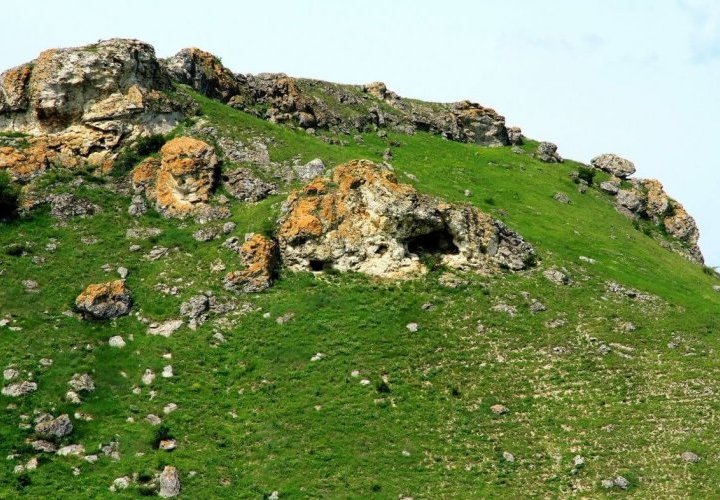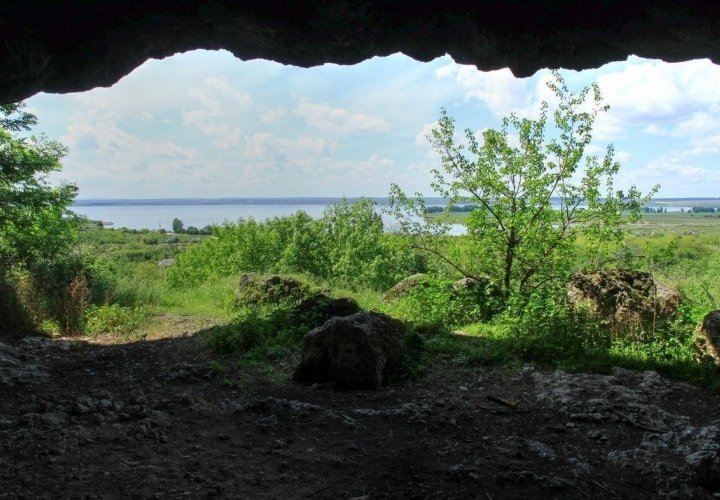Butesti Ravines (also named Butesti Gorge) are a nature monument located southeast of Butesti village in Glodeni district on an area of 96 ha. The side view of the largest and steepest cliff of the gorge reminds an elephant. The ravines are considered some of the widest in the middle Prut basin. They were dug by the Camenca River in the reef with a length of over 2 km and a width of 125 m, under the form of a canyon. Geological formations, like other calcareous reefs in the northwest of the Republic of Moldova, formed 15-20 million years ago, from corals, blue-green algae, shells of various mollusks and other marine organisms that populated the warm waters of the Sarmatian and Tortonic Seas. At the foot of the highest rock of the reef, more
Duruitoarea Gorge
Duruitoarea Gorge is located in the eastern part of Duruitoarea village, on the left bank of the Ciuhur River, a tributary of the Prut. Duruitoarea Reef is a fragment of the reef series in the northwest of the Republic of Moldova, called the Prut Reefs. The steep slopes are home to countless small caves. An ancient human settlement that dates back to the Paleolithic was identified in one of the caves. It is 49 m long and between 5-9 m wide and is made up of three different sections. Archaeologists have discovered here fossils, flint objects, etc.
Japca Rock
Japca Rock is located 1 km north of Japca village, Floresti disctrict, in proximity to Japca Monastery on an area of 10 ha, near the road linking the villages of Sanatauca, Bursuc and Japca. From the geological point of view, Japca Rock is part of Japca reef and has a height of 170 m. At the bottom, on an area of about 35 m, cretaceous rocks can be distinguished, over which badenian conglomerates of about 15 m wide were identified. The bioherm is formed by shells of marine organisms. Many caves and grottoes were found in the calcareous layers.
Trinca Gorge
Trinca Gorge is a nature monument located southwest of Trinca village, Edinet district, in the valley of the Draghiste River. Due to the action of the Draghiste River on the limestone reef, a valley bordered by rocky walls was formed. It is 500 m long, 250 m wide and about 40 m deep and together with Burlanesti and Fetesti gorges form the natural complex Trinca-Fetesti-Burlanesti of the Draghiste River basin.
Emil Racovita Cave
The cave is located near Criva village, Briceni district, in the north of the country, and ranks third among the world’s longest gypsum caves. It was discovered in 1959 by the speleologist Emil Racovita. Currently, around 90 km of labyrinths and tunnels on 3-4 levels, are known and mapped. In some places, tunnels are wider, forming large rooms. The most outstanding are: “The one hundred meters room” and “The waiting room”, which are between 60 - 100 m long, 30 - 40 m wide, and up to 11 m high. There are over 20 lakes in the cavities, the biggest of them being “The Dacians’ Lake”, “The Green Lake”, and “The Blue Lake”, with lengths between 8 and 15 meters, widths between 5-10 meters, and average depth of 2 meters.
“Padurea Domneasca” Reserve is the largest reserve of its kind in the country. It is located 185 km far from Chisinau, in the Prut river bottomland, on a total area of about 6,032 ha and includes one of the oldest forests in the Prut river bottomland. The flora of the reserve is rich and diverse including 700 species of plants. The century-old oaks (200-250 years) cover a total area of 123 ha, some of them reaching a height of 30-35 m. Other trees specific for this type of environment grow here such as poplars, willows, maples, ashes, elms. Many rare fauna species such as red deer, otter, wildcat, pine marten, weasel, spoonbill, great egret, white swan, etc. are found here. The pride of the reserve are the bisons that have been acclimatized here (in older times, more
“Prutul de Jos” (Lower Prut) Reserve
“Prutul de Jos” Reserve is located in the southwestern part of the Republic of Moldova, along the lower course of the Prut River, between the villages Slobozia Mare and Valeni, in Cahul district, about 200 km far from Chisinau. It was created in 1991 to protect the flora and fauna of Beleu Lake and its surroundings. The total area of the reserve is 1,691 ha and almost one third of it is covered by the Beleu lake (628 ha), one of the largest natural lakes in Moldova and the main attraction of the reserve. Beleu lake is a relict of the Danube, constituting a freshwater lagoon formed by the transgressions of marine waters about 5-6 thousand years ago. It is a natural monument of great scientific, cultural and aesthetic value.
The variety of landforms, climatic peculiarities, hydrological elements, as well as the different nature of the rocks within the reserve are elements that led to a rich and varied background of plants including 310 species of vascular plants, including 10 species of trees, 11 of shrubs, 5 of creepers and 284 species of herbaceous plants. Rare orchid species included in the Red Book of the Republic of Moldova (Red list of threatened species) grow on this bottomland.
The Prut River bottomland represents an important migration route for many species of birds, and the water basins with rush-beds, willow forests, etc. are the appropriate place for having a rest, feeding and nestling for them. The fauna of the reserve is varied including 189 species of birds, 34 species of mammals, 7 species of reptilians, 11 species of amphibians and 27 species of fish. Many of them were included in the Red Book of the Republic of Moldova. Here you will see many species of birds including cormorants, white storks, swans, glossy ibises, white kingfishers and even pelicans. However, the pelicans don’t nest in this region, but in the Danube Delta, coming to Beleu and Manta lakes in Moldova, just in search of fish from the lakes.
The value of its natural heritage has been recognized by declaring the area as a wetland of international importance. Moreover, in 2018 the reserve was registered in the UNESCO World Network of Biosphere Reserves, officially becoming the first biosphere reserve in Moldova.
Due to the impressive diversity of habitats and life forms that it hosts in a relatively small area, “Prutul de Jos” (Lower Prut) Reserve forms a veritable museum of biodiversity, a nature gem of priceless value for the natural, national and world heritage.
“Plaiul Fagului” Reserve
“Plaiul Fagului” Reserve covers an area of 5,642 ha, including 5,375 ha with forests. The territory of the reserve is very fragmented, the interval of the altitudes varies between 410 and 140 meters above sea level. The flora of the reserve includes over 900 plant species of which 77 are rare and threatened species. The forests with broadleaf trees such as beech, durmast, hornbeam, and ash of Central-European type can be found here. The beech trees are very valuable – with ages between 80 and 150 years, their heights reaching 30-40 m and the average trunk diameter - 80-100 cm. The fauna is represented by 211 species including the wild cat, pine marten, badger, fox, boar, roebuck and the red deer. “Plaiul Fagului” is a precious nature thesaurus of Moldova its territory being partially accessible for the ecotourism.
“Toltrele Prutului” (Prut Rocks) Reserve
“Toltrele Prutului” (Prut Rocks) are a chain of limestone formations located in the northwestern part of Moldova on a distance of about 200 km, alongside the Middle Prut River, from Criva village, Briceni district up to Cobani village, Glodeni district. Hard limestone chains containing skeletons of corals, mollusks, shellfish, algae, marine animals and organisms that used to live in the tropical Tortonian and Sarmatic seas 10-20 million years ago form these reefs. The reef genesis on the territory of Moldova is similar to the genesis of the biggest coral reef chain in Australia, with the difference that the latter is almost entirely covered by water, while the reefs that appeared in the Prut Rocks exceed 100 meters in altitude. more
“Suta de Movile” (The Hundred Knolls) Reserve The Hundred Knolls Reserve represents a landscape of great scientific and aesthetic values covering an area of 1,072 ha. It is located in the Prut River bottomland, between Braniste village, Riscani district and Cobani village, Glodeni district. In reality, the number of knolls is bigger - over 3,500 knolls with heights from 1.5 to 30.5 m have been found here. Dimitrie Cantemir, who called it “Centum Monticulli”, made the first description of this natural phenomenon in 1716 in “The Description of Moldova”. The strips of land between the knolls are slightly ruffled. Oases of vegetation with very rare plant species from the flora of the country such as pheasant’s eye, Tatar bread plant, Easter flower, iris, hyacinth, feather grass, valerian, ox-eye daisy, wild vetch, etc. can be admired in the reserve. According to some scientists, The Hundred Knolls is the only place in Europe where such a great number the submarine reefs of the Mediterranean Sea (tertiary water basin, that covered about 20 million years ago the current territory of Moldova) are concentrated. Latest researches reveal that the Hundred Knolls are a natural phenomenon, however their provenience has not been identified yet.

